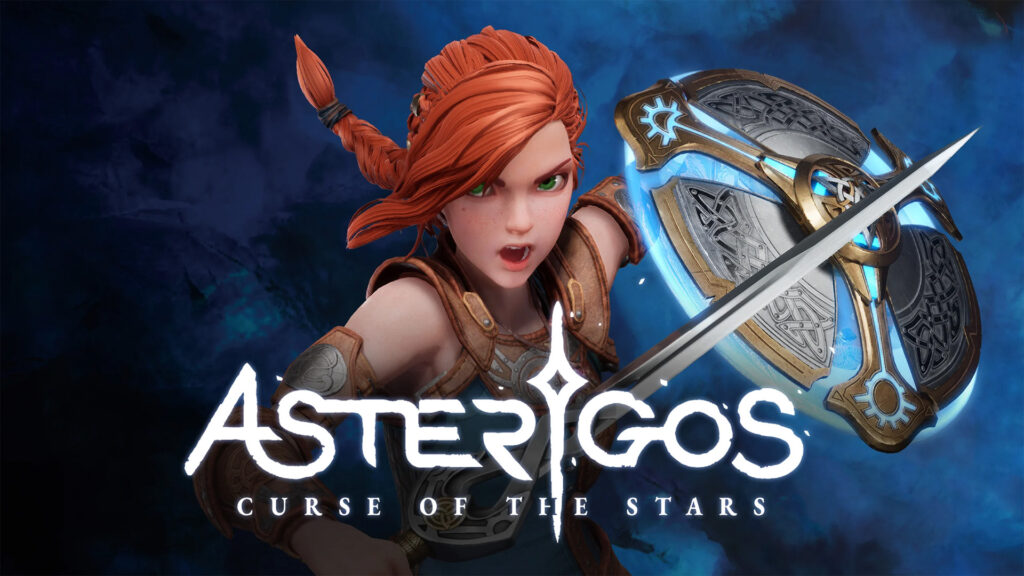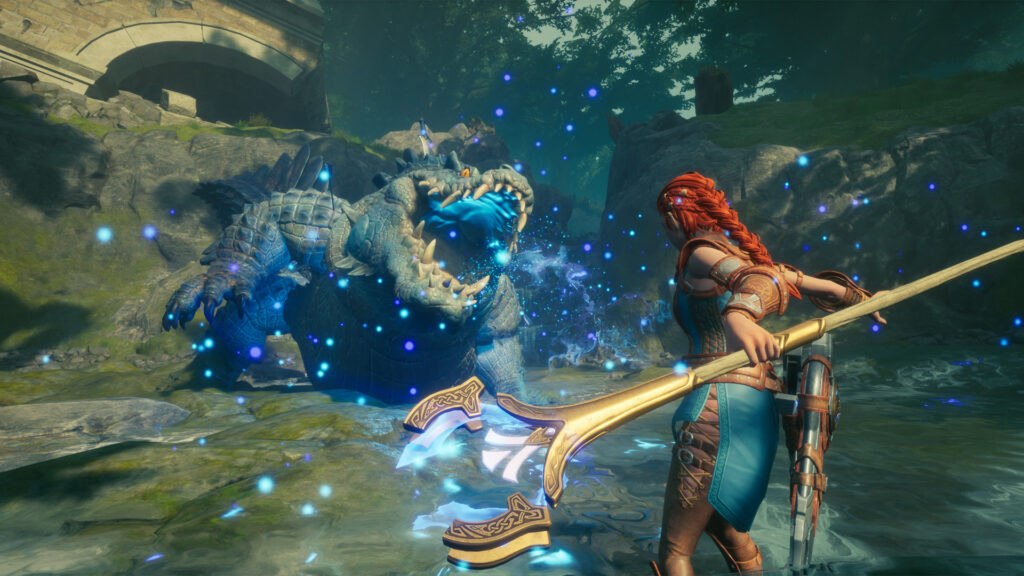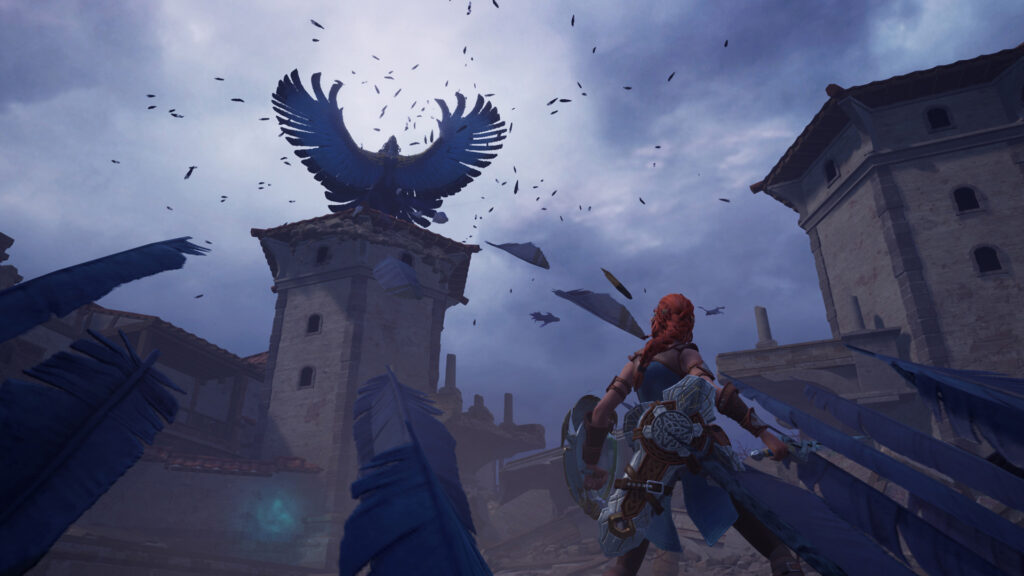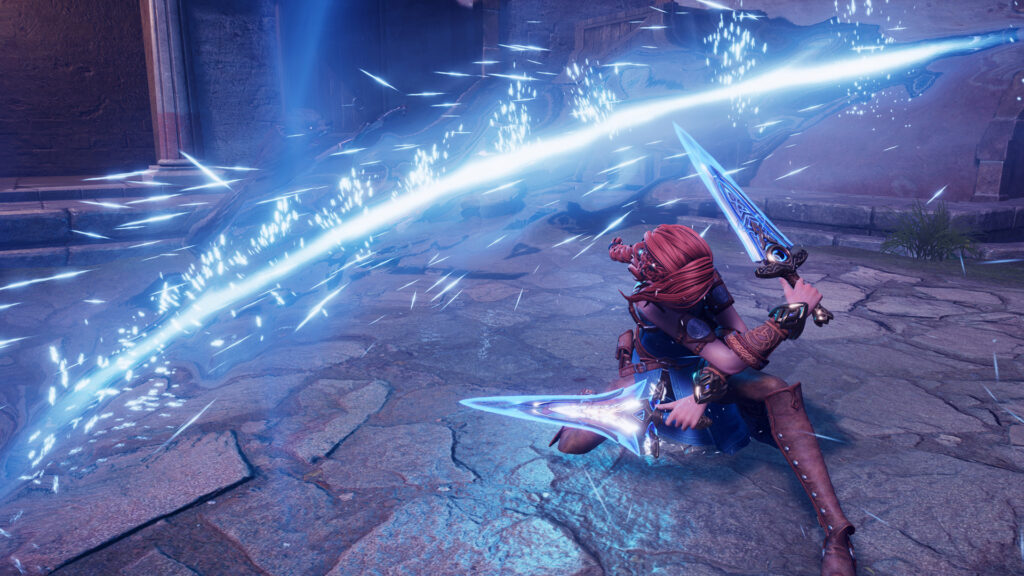Platforms: PC, XBox, PlayStation
[Review code provided by tinyBuild]Asterigos: Curse of the Stars (developed by Acme Gamestudio) puts players in the boots of Hilda, a brave young warrior who travels to Aphes on a mission to find her missing father, the commander of the Northwind Legion. Naturally, the mission won’t be as simple as it seems.
Aphes was once a beautiful and thriving city, but has suffered for centuries under a curse which has rendered the populace unable to age or reproduce and left them dependent upon ever-dwindling supplies of Stardust – a resource that must be mined, or taken from the lives of others.
All the while, shrewd politicians and opportunistic bandits have been making their plays, and a sinster cult has surfaced, promising salvation by turning men into monsters. Things have taken a dark turn, indeed.
It’s a wonderful setting to explore – inspired by Greek and Roman mythology, Aphes is lavishly realised. Verdant swamps, crystalline caverns and cities of white marble mark the landscape. Each area looks and feels a little bit different, and even the sewers and slums are a pleasure to roam.
Players will find that the world is full of notice boards, plaques, letters and diaries that expand on the way Aphes used to be, and the unfortunate events that made it the way it is now. Echoes of the past reveal conversations between the story’s minor and major players; gossip heard through doorways provides context for current events. The tale of Aphes is told quite organically, in a way that encourages and rewards exploration.
In terms of gameplay, Asterigos is most obviously inspired by the works of FromSoftware. The level structure will feel familiar to players of Dark Souls, while the pace and flow of combat feels quite reminiscent of Bloodborne. Boss fights are spectacular affairs against vicious beasts, mighty titans and proud warriors, each with their own challenging patterns to learn and exploit. As you’d expect, it’s all very satisfying.
However, Asterigos also inherits some of the FromSoft formula’s weaker points. Checkpoints can be frustratingly sparse – dying to a boss and having to fight (or, more likely, sprint) your way back remains as annoying as ever. Fights against groups can feel unfair, particularly when ranged attacks are involved, and if there’s a precarious instant-death pit to fall into, you’re guaranteed to get clobbered into it at least once. Also, there are mimics.
Asterigos also lacks refinement in some areas. The combat isn’t quite as meaty as it could be and sometimes there’s a lack of feedback when you’re getting hit, which got me killed a few times. There are some simple quality-of-life oversights, as well. For example, your potions don’t automatically replenish when you die, and you don’t unlock fast travel until about a third of the way through the game. Inconveniences like that may seem small, but quickly add up.
The bright side is that Asterigos isn’t simply following the FromSoft playbook one-to-one. For one thing, it has a selection of difficulty settings which can be toggled at any time. The default ‘Adventure’ setting offers a good challenge without being too punishing, while the easier ‘Story’ setting buffs up your health so that you can afford more mistakes. For the grizzled gamers out there, there’s ‘Challenge’ difficulty – plus equippable items that restrict your ability to gain EXP, for those saucy low level runs.
Levelling up is streamlined, with only three stats to worry about. Equipment is similarly simple to understand and weapons upgrade in a linear fashion. Hilda makes frequent notes and illustrations to keep track of ongoing events, so you can always check if you left any business unfinished in past areas. It’s a more approachable experience, on the whole.
Asterigos also boasts a fully developed skill-tree that revolves around the game’s six weapons. Hilda can equip two of these six weapons at any given time, and fluidly combo between them in battle. Each weapon has its own specialties and unique skills, allowing players flexibility in how they fight. I settled into using the spear and staff, combining a powerful parry with ranged attacks for a versatile approach.
There’s a very strong emphasis on story-telling, too. The story of Asterigos is quite compelling, with an array of likeable and nuanced characters to meet. Although you can probably guess how things will end, the journey there still holds some surprises. There are some choices to be made along the way, as well – supposedly, your choices have consequences, but without playing through again I couldn’t say what those consequences are. I will say that the post-ending aftermath felt like it might vary in some ways.
There’s oodles of dialogue (much of it voiced quite nicely), with characters frequently commenting on your progress, offering advice or simply making small talk. Even the minor players have history and a presence in the world that makes them feel fleshed out, rather than simply dotted about to sell potions and hand out quests. To be frank, there might even be too much lore – Asterigos boasts an overwhelming number of diaries and dialogues – but it’s hard to complain when so much of it is optional.
Final Score
Summary
All in all, I thoroughly enjoyed the 30-or-so hours that I spent in the city of Aphes – and that’s without clearing every side-quest or searching every side-path for nuggets of lore. In fact, my achievements show that I skipped several optional bosses – perhaps something to look for if I tackle New Game+ mode.
It has some rough edges here and there, but Asterigos: Curse of the Stars is undeniably a high effort production. It’s fun to play, it looks and sounds lovely, and the writing is enjoyable. And all of this comes at an impressively affordable price – around $35, or £30. I’d recommend it to anyone who likes action-RPGs.






